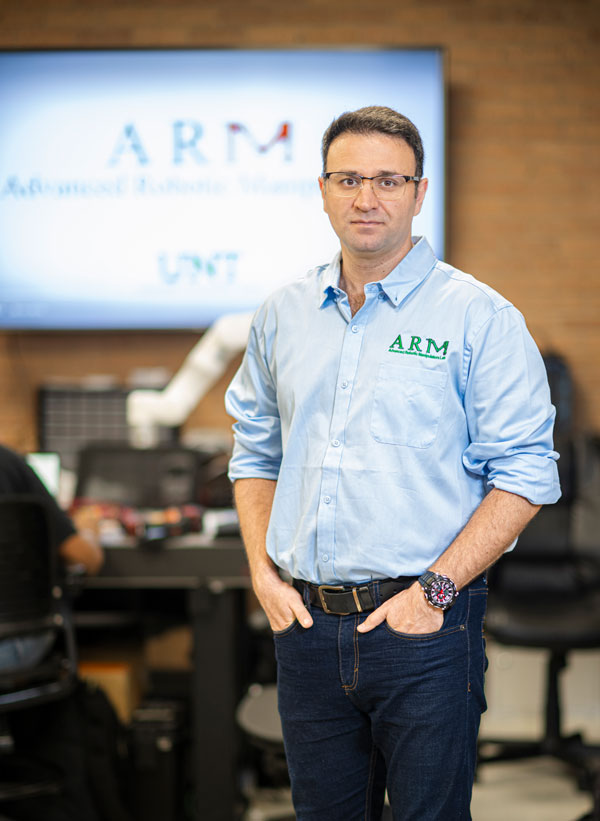Dr. Amir Jafari, a mechanical engineer at UNT specializing in robotics, founded a startup that bridges cutting-edge research with real-world impact in both biomedical innovation and STEM education. His company emerged from inspiration to update decades-old medical technologies and to also make robotics more engaging and accessible to the next generation.
After observing a disconnect between physicians and engineers, he was inspired to design soft robotic solutions that could bridge the gap in meaningful, clinical ways.
 “A close friend of mine, an endovascular surgeon came to me with a serious problem,”
Jafari recalls. “Endovascular and interventional surgeons are chronically exposed
to ionizing radiation during lengthy procedures. Studies have shown significantly
increased left-sided cranial exposure and reported cases of brain tumors in this group.
There’s also a consistent elevation in occupational risks like cataracts and thyroid
disease.”
“A close friend of mine, an endovascular surgeon came to me with a serious problem,”
Jafari recalls. “Endovascular and interventional surgeons are chronically exposed
to ionizing radiation during lengthy procedures. Studies have shown significantly
increased left-sided cranial exposure and reported cases of brain tumors in this group.
There’s also a consistent elevation in occupational risks like cataracts and thyroid
disease.”
His colleague explained that many surgeons develop cancer before age 60, large due to the extended hours – often 6 to 12 per procedure – spent exposed to radiation. He asked Dr. Jafari if he could create a safer alternative.
The conversation led to the development of a snake-like soft robotic device capable of navigating the human body internally – reducing or eliminating the need for prolonged radiation exposure.
“Imagine a soft, hollow robotic snake that can steer safely through blood vessels without damaging the vessel walls,” Jafari explains.
The innovation has the potential to reduce surgical times from 12 hours to just one or two — while dramatically lowering health risks for the surgeons performing them.
“Soft robotics is about designing machines that behave more like humans — systems that are inherently safe, adaptable and intuitive,” he says.
Dr. Jafari’s company, Robotics and STEM LLC, has two distinct arms: one focused on research and commercialization of soft robotic technologies, and the other dedicated to STEM education outreach. Through partnerships with more than a dozen local schools – and now with support from an NSF-funded project – the program gives students hands-on exposure to robotics that go far beyond coding. Participants learn 3D design, mechanical building and circuit integration, gaining a comprehensive foundation in engineering.
“Let’s face it – math and physics on their own can be boring,” Jafari laughs. “But when students see their code make a robot move or build a working prototype from scratch, it transforms the way they think about science. Robotics is a gateway to getting kids truly excited about STEM.”
With more than ten patents (provisional and non-provisional) and new technologies emerging from his UNT lab each semester, Dr. Jafari emphasizes that innovation at UNT isn’t confined to just journal articles.
“We’re not just publishing papers — we’re building usable tech.”